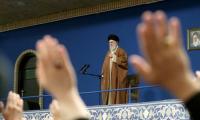KARACHI: The listed cement companies posted record earnings of Rs22.4 billion in the second quarter of the fiscal year 2024, up 8 percent year-on-year, as higher prices and other income offset lower dispatches, a brokerage report said on Wednesday.
The cement sector saw its sales rise by 9 percent year-on-year to Rs179 billion in the October-December period, driven by a 16 percent increase in average cement prices, according to a report by brokerage Topline Securities.
However, local dispatches fell by 12 percent year-on-year to 10.1 million tonnes in the second quarter, due to lower demand from the construction sector amid economic slowdown and political uncertainty.
The decline in total cement dispatches was limited to 1 percent year-on-year, as cement exports surged by 166 percent year-on-year to 2.5 million tonnes in the second quarter, benefiting from the depreciation of the rupee and the revival of demand from neighbouring countries.
The cement sector's gross margins expanded by 2.1 percentage points to 27.5 percent in the second quarter, compared with 25.5 percent in the same period last year, led by lower coal prices, which account for about 60 percent of the sector's production cost.
However, the gross margins declined slightly from 27.8 percent in the first quarter, due to higher coal and electricity prices in the second quarter. During the second quarter, cement players in the southern region mostly relied on Richards Bay coal, while those in the northern region used a combination of Afghan and local coal, the report said.
Richards Bay coal prices fell 30 percent year-on-year but rose 8 percent quarter-on-quarter to Rs48,000 per tonne in the second quarter. Similarly, average Afghan and local coal prices rose 7 percent year-on-year and 11 percent quarter-on-quarter to Rs43,400 per tonne in the second quarter.
The cement sector's selling and distribution costs increased by 130 percent year-on-year to Rs7.4 billion in the second quarter, owing to the implementation of axle load regulations, which limit the weight of trucks carrying cement, and the inflationary environment.
The sector's other income, which includes dividend and interest income, jumped by 163 percent year-on-year to Rs6.6 billion in the second quarter, amid higher payouts from the sector's subsidiaries and associates.
Of the Rs6.6 billion of the sector's other income in the second quarter, 46 percent or Rs3 billion was contributed by Lucky Cement, the largest cement producer in the country.
The cement sector reported its highest ever earnings before interest, tax, depreciation and amortisation (EBITDA) of Rs47.5 billion, up 10 percent year-on-year and 1 percent quarter-on-quarter in the second quarter. The EBITDA margin of the sector remained at 27 percent in the second quarter, compared with 26 percent in the same period last year and 28 percent in the first quarter.
The sector's finance cost, which includes interest payments on loans, rose by 41 percent year-on-year to Rs9.6 billion in the second quarter, due to higher interest rates and borrowings of the sector.
The sector reported an effective tax rate of 32 percent in the second quarter, compared with 27 percent in the same period last year and 35 percent in the first quarter.
In the first half of the fiscal year 2024, the sector's profitability increased by 23 percent year-on-year to Rs43.6 billion, owing to higher retention prices and other income.
The major contributors to the profitability of the cement sector in the second quarter were Lucky Cement, followed by Bestway Cement and Fauji Cement.
Lucky Cement, which contributes 30 percent to the total cement sector profitability, reported profits of Rs6.8 billion, up 107 percent year-on-year, due to a surge in sales and other income in the second quarter.
Bestway Cement, which contributes 17 percent to the total cement sector profitability, reported a decline in profits by 22 percent year-on-year to Rs3.8 billion in the second quarter, despite a 20 percent increase in sales, the report said.
The lower profitability was attributed to a decline in gross margins from 33 percent in the same period last year to 30 percent in the second quarter.
Fauji Cement, which contributes 12 percent to the total cement sector profitability, reported earnings of Rs2.6 billion, down 4 percent year-on-year, due to a significant jump in distribution and finance costs in the second quarter.
All companies in the sector reported profitability except for Dewan Cement, which reported a loss of Rs226 million in the second quarter. Similarly, Power Cement reported a loss before tax of Rs489 million, while the profit after tax clocked in at Rs0.3 million in the second quarter, mainly due to a tax reversal.
Honda officials posing for a photgraph. —APP/FileKARACHI: Honda Atlas Cars Pakistan Ltd has achieved a major...
SOS children village's children showing bags donated by Emirates International Airlines. — Emirates...
Automobiles at the shipping terminal are shown from the view of a drone in San Diego, California, US, March 26, 2025....
Key challenge lies in whether the ruling elite is willing to implement changes that could weaken their grip on power
A woman holds a smartphone displaying the logo of social network X . — AFP/FileElon Musk said his xAI artificial...
A representational image of a person using his cellphone for a digital transaction. — Unsplash/FileKARACHI: Chief...







